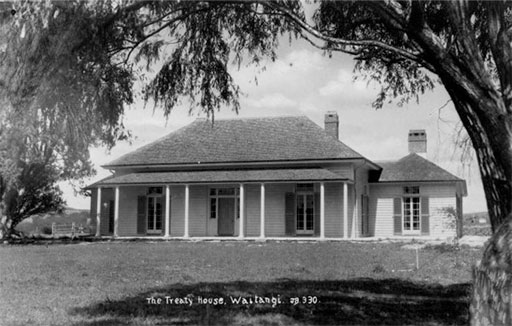Te Tiriti o Waitangi – Treaty of Waitangi, is an agreement in both the te Reo Māori and English language. It was signed by representatives of the British Crown and by representatives of Māori tribal groups in 1840. It has been called the most important document in New Zealand’s history and New Zealand’s founding document.

What did the Treaty mean?
- Māori granted the British Crown rights to govern and to continue settling the country with British immigrants.
- Māori kept their tribal authority over their lands and resources and were granted the full status and rights of British citizenship.
Signing the Treaty
The Treaty was discussed and first signed at Waitangi, near the top of the North Island. A large hui or meeting was held at the James Busby’s house at Waitangi. The hui went from 4 to 6 February, 1840 with the signings on the 6 February 1840. The meeting was called by Captain William Hobson who had been appointed as New Zealand Consul by the British government. People representing the British government as well as Rangatira and other important members of some hapu and iwi attended the meeting.
- Explore an interactive page showing a list of who signed the Waitangi copy of the Treaty of Waitangi
- Waitangi Treaty Grounds – information about the historic site.
![Artist unknown [Reconstruction of the signing of the Treaty of Waitangi. ca 1940]](https://christchurchcitylibraries.com/Kids/Treaty-Zone/imgs/Feature-22701985.jpg)
Following the hui and initial signing at Waitangi, copies of the treaty were taken around the country over the next six months to get Rangitira from different tribes to sign it. A number of chiefs refused to sign but many signed after discussion with the British officers and missionaries and Māori representatives who were travelling with them. Around 500 Māori had signed by the end of that year.

The Treaty documents today
The remaining documents are being preserved by Archives New Zealand. Explore all nine sheets of the Treaty of Waitangi as well as photographs, translations and information about the documents.

